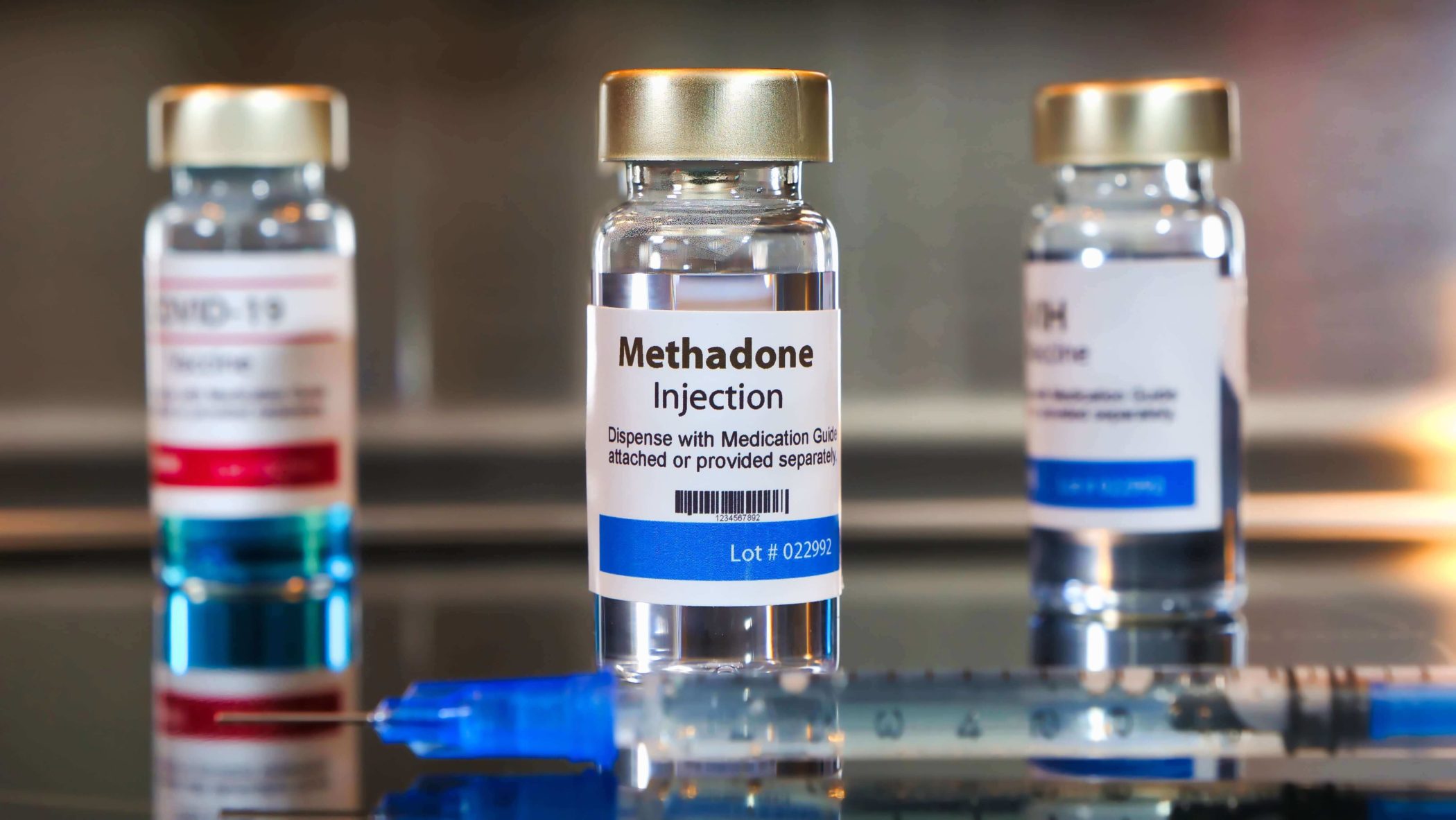The opioid epidemic has not slowed in recent years. An estimated 10.1 million Americans ages 12 and up misused opioids in 2019, according to Health and Human Services (HHS). Broken down further, that’s 9.7 million people who misused prescription pain relievers and an additional 745,000 people who used heroin.
Meanwhile, early data from the Centers for Disease Control and Prevention (CDC) shows more than 100,000 overdose deaths took place in the U.S. between April 2020 and April 2021, an increase of nearly 30% from the same period the year before.
Clearly, multiple forms of treatment need to be available to slow this growing epidemic. One of those forms of treatment is methadone.
What is Methadone?
Methadone is a medication used to stop people addicted to opioids from relapsing into drug use. It is a form of drug known as a synthetic opioid agonist. Because it triggers the same neural pathways as addictive drugs like fentanyl, it can be addictive.
However, when used as intended and prescribed, methadone eliminates withdrawal symptoms and drug cravings. This can greatly lower an individual’s chance of relapse.
Like prescription opioids or heroin, methadone acts on opioid receptors in the brain. Unlike these drugs, however, methadone does this much more slowly and therefore doesn’t trigger the feeling of euphoria that other opioids do.
Studies have shown that treatment with methadone (or buprenorphine) was linked to a 76% reduction in overdose at three months of recovery and a 59% reduction at 12 months. Because it has the potential to be addictive, however, many treatment providers are hesitant to use methadone without close supervision.
How Methadone Treatment Works
Methadone has been a part of medication-assisted treatment (MAT) since the 1950s. The drug can help someone stop taking heroin or other opioids and works best when paired with counseling and social support.
Decades of research on methadone have shown that it can significantly improve outcomes for someone in recovery. It works by altering how the nervous system, including the brain, responds to pain. Withdrawal from any opioid causes pain and withdrawal symptoms. Methadone blocks those symptoms without giving the person the same euphoric effects that opioid drugs such as heroin, morphine, and codeine would.
Methadone comes in several forms, including a pill, a liquid, and a wafer. The drug should be taken once a day. Each dose offers about four to eight hours of pain management.
Side Effects of Methadone
As with any medication, there can be side effects when taking methadone. Methadone can cause short-term effects including:
- Restlessness
- Upset stomach or vomiting
- Slow breathing
- Itchy skin
- Heavy sweating
- Constipation
- Sexual challenges
- Weight gain
- Sleep changes
- Appetite changes
- Headache
- Stomach pain
- Dry mouth
- Flushing
- Mood changes
- Vision problems
However, other side effects can be dangerous. If any of the following occur, the person should call their doctor or 911 immediately:
- Trouble breathing
- Fainting or lightheadedness
- Hives or a rash
- Swollen lips, tongue, throat, or face
- Chest pain or a rapid heartbeat
- Hallucinations or confusion
- Seizures
- A hoarse voice
- Trouble swallowing
- Severe drowsiness
- Unusual menstrual periods
Taking Methadone Safely
To use methadone safely, health care professionals should plan to taper the patient off the drug over time. This process of weaning off methadone should be carefully monitored by both the patient and their health care provider and can take months or even longer. Brain circuits, just like bones, take time to heal. Depending on the severity and length of a person’s opioid addiction, they may need methadone for an extended period to maintain their sobriety.
Because methadone can still be addictive, the patient must take their dosage exactly as prescribed. Additionally, each patient’s methadone dosage should be specifically tailored to their needs. Other medications may interact with methadone, resulting in heart problems. This is why treatment providers must be aware of all other prescriptions an individual is taking.
Methadone should only be taken in the amount prescribed and at the time specified. To avoid dependence and addiction, individuals should never:
- Skip a dose
- Take an additional dose if they feel the first dose isn’t working
- Change their dosage without talking to their health care provider
- Consume alcohol while taking methadone
- Drive or operate machinery on methadone
Call 911 if you suspect someone has taken too much methadone or is showing signs of an overdose, such as shallow breathing, loss of consciousness, or weak pulse.
Methadone should be kept out of reach of children. If someone needs to dispose of any unused methadone, they should do so by flushing it down the toilet.
Because methadone has the potential for addiction, treatment providers may recommend other types of medication assisted treatment. These medications include buprenorphine and naltrexone, both of which can help manage the withdrawal symptoms and cravings associated with opioid addiction.
Unlike methadone, buprenorphine is only a partial opioid agonist. This means the drug activates the brain’s opioid receptors less strongly than a full agonist would.
Naltrexone is an opioid antagonist. This means it works by blocking the activation of opioid receptors and prevents any opioid drug from causing euphoria or any other rewarding effects. It does not work by controlling withdrawal and cravings.
At Bridges of Hope, we take a comprehensive and integrated approach to addressing all issues related to substance use and mental health disorders. Utilizing therapeutically proven, evidence-based clinical practices, we provide superior client care throughout the state of Indiana.


 Verify Insurance
Verify Insurance
 Toll Free Call
Toll Free Call